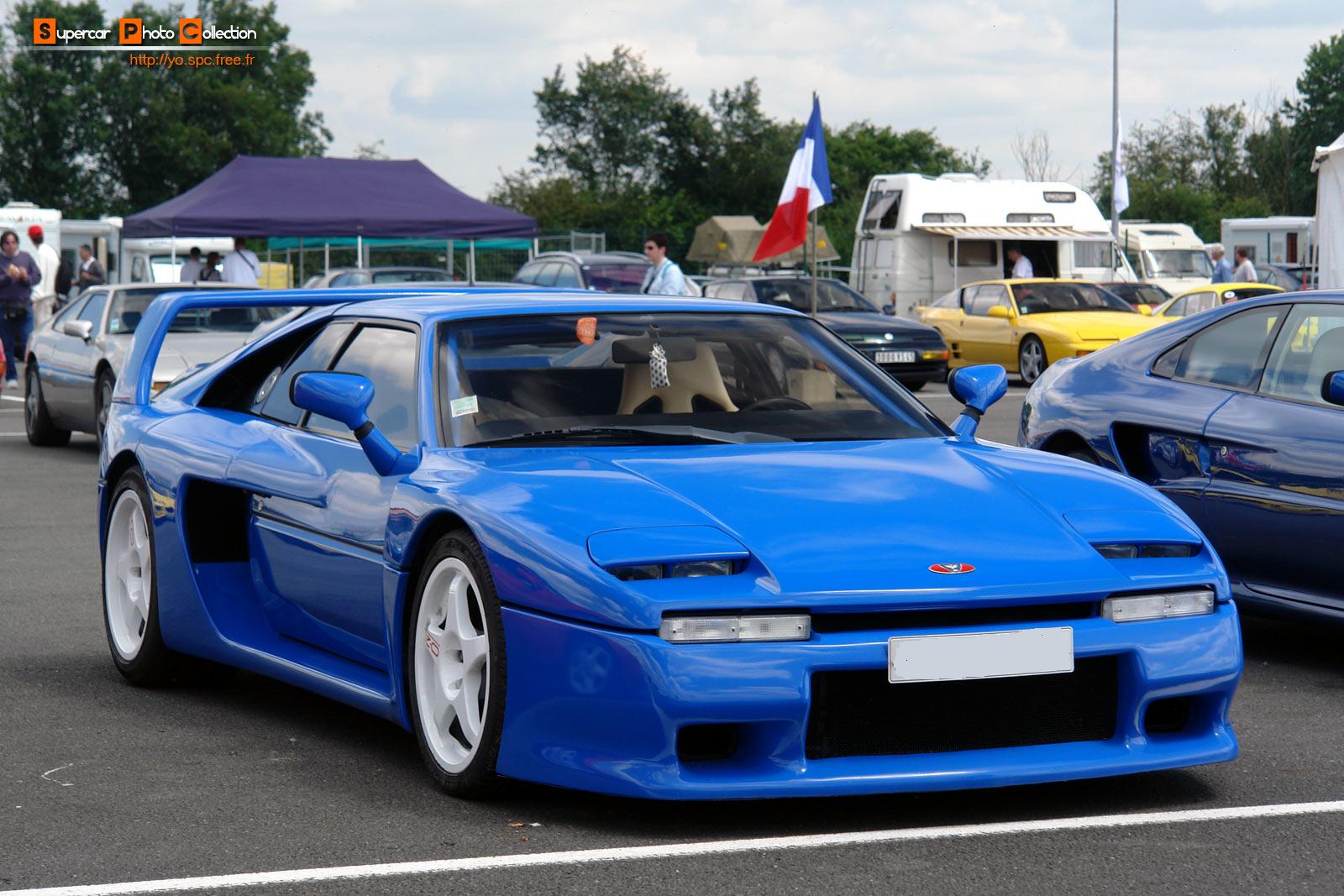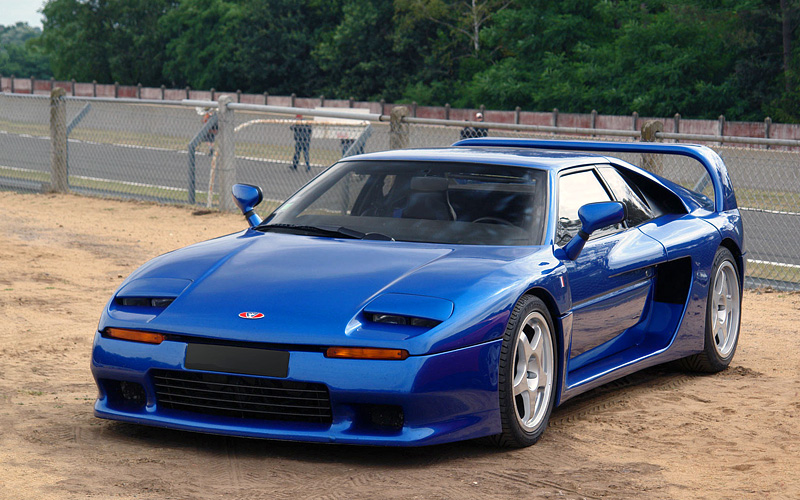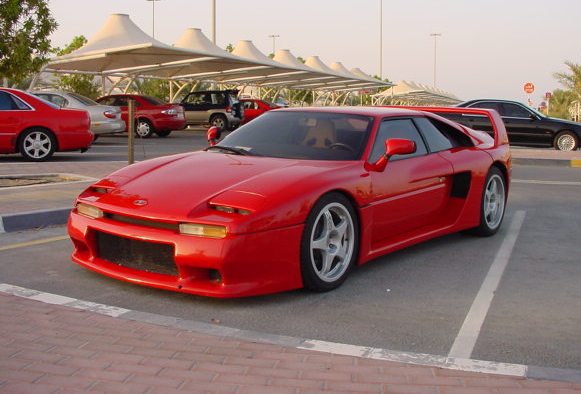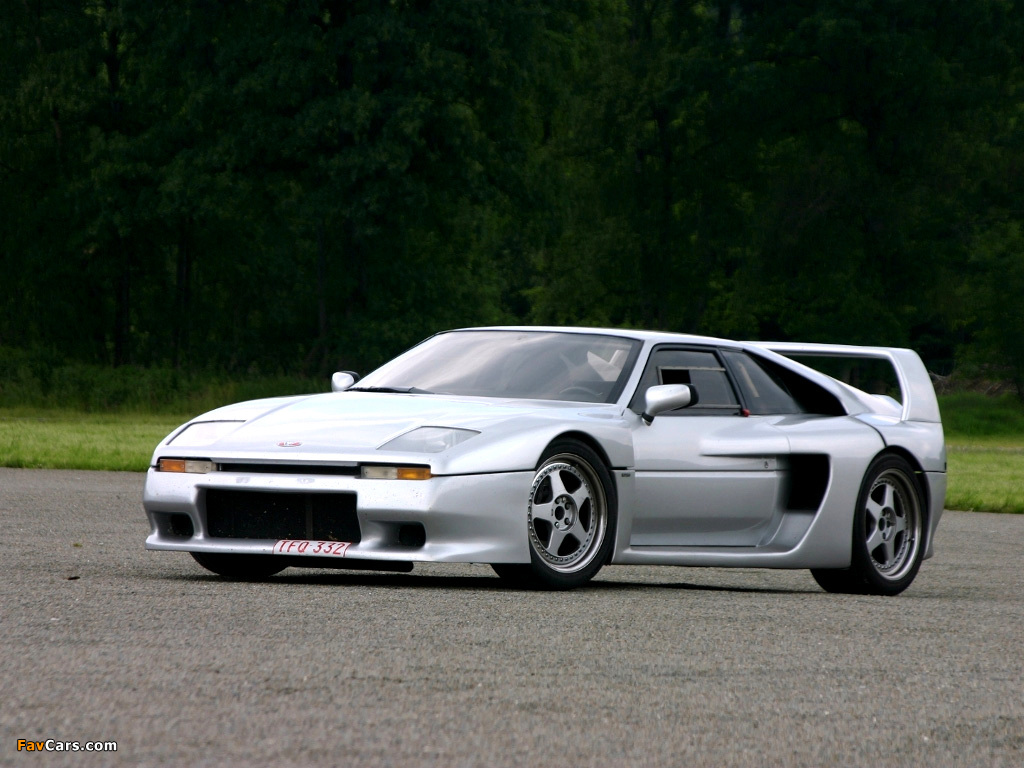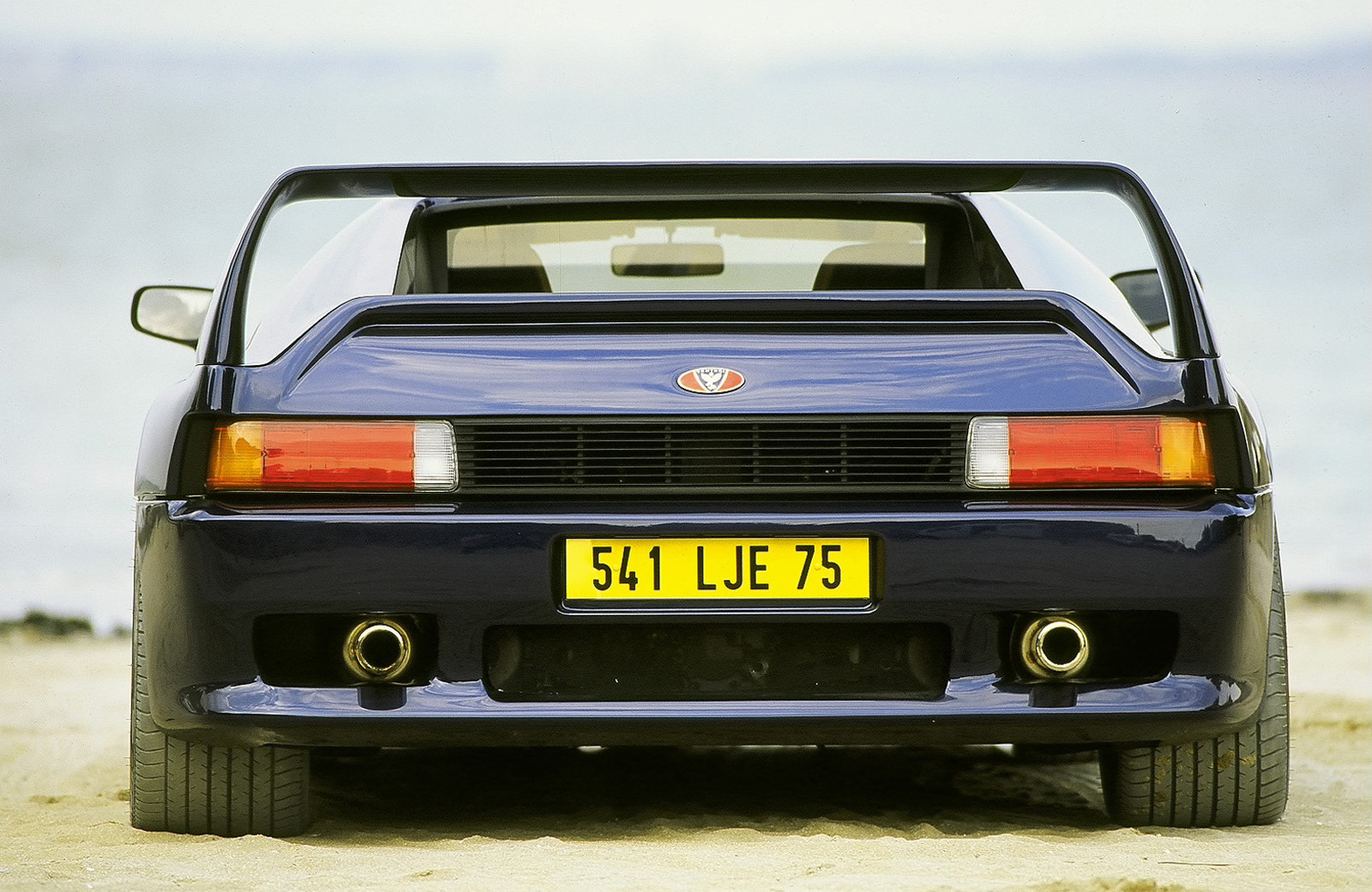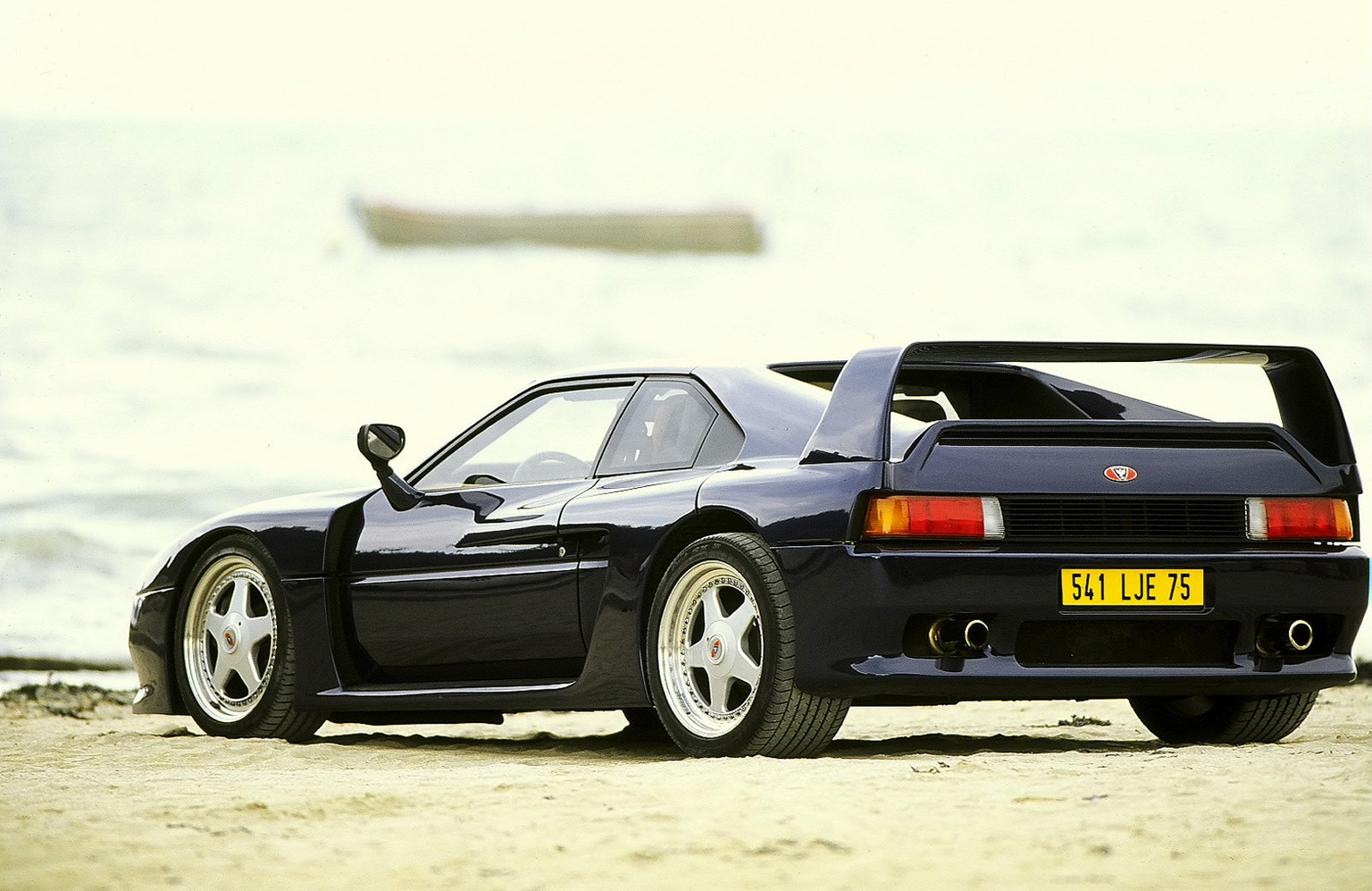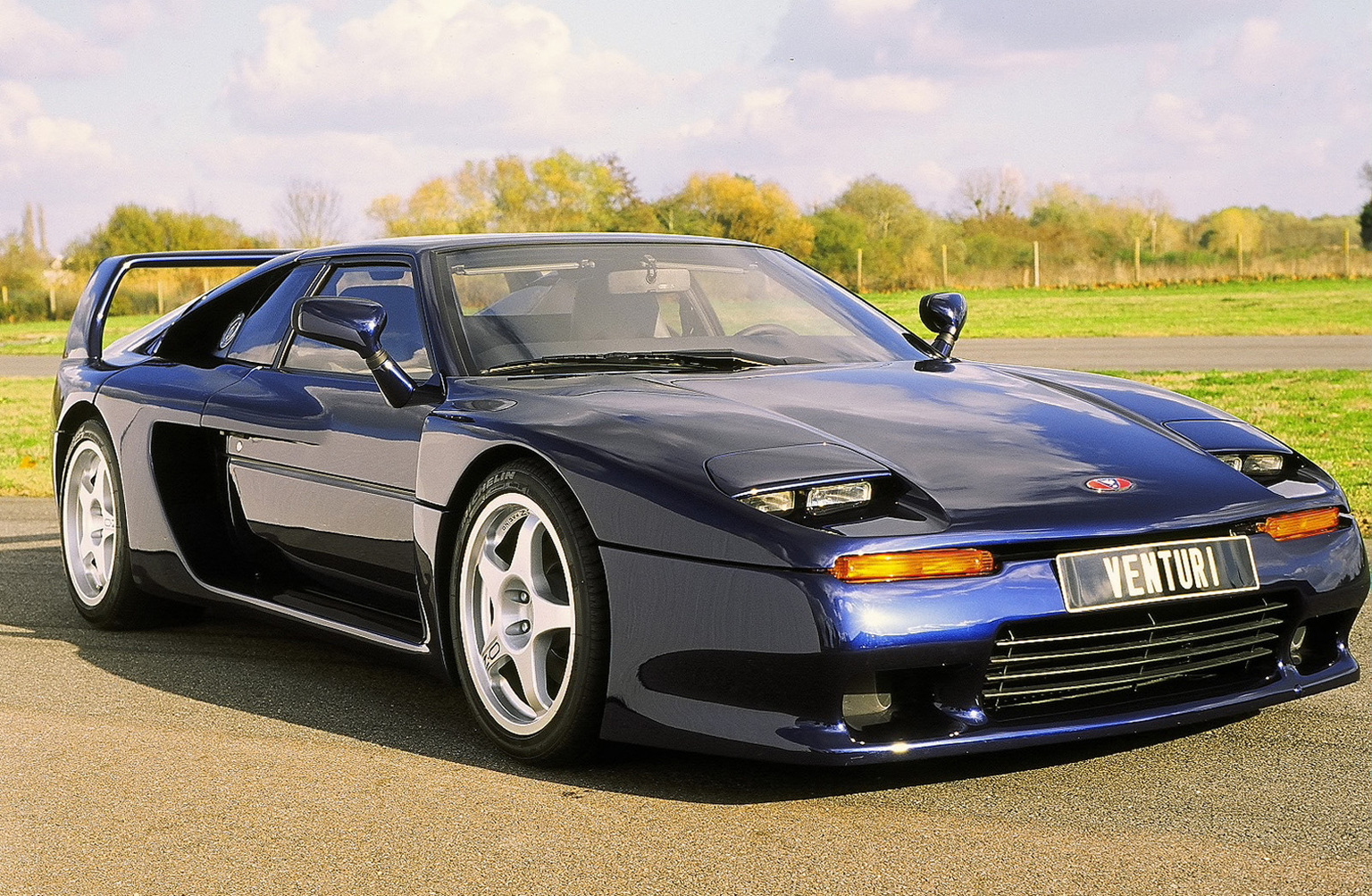1995 Venturi 400GT
The 400 GT remains one of the best performing French cars ever produced, and it is in fact the very first car in the world to have standard carbon brakes.
On June 8, the Venturi 400 GT was officially presented to the press, potential customers, suppliers and local authorities. The sponsor of the Venturi 400 GT Henri Pescarolo. Venturi 400 GT is a road version of the Challenge extrapolated that illustrates the Gentlemen Drivers Trophy. The Challenge version then sold 705 000 Francs could be reconditioned to the road for the modest sum of 100,000 francs. To draw the Venturi 400 GT Challenge and Gérard Godfroy is part of an already existing database. Returning to base the Venturi 260, the French designer drew a weight training session.
The front and rear wings and take the volume, an integrated rear spoiler the type Ferrari F40 is mounted, and front and rear bumpers are completely redesigned. The headlights are always retractable but half visible and especially wider. The exterior mirrors are enhanced to allow not losing rearview fields with broad wings and rear spoiler. Finally, a very large side air outlet ahead of the rear wheels and beautiful 18-inch wheels OZ full panoply of the perfect Supercar. Once the door open, the interior displays a very sporty presentation. Two bucket A8 Recaro leather-covered stall the body of the pilot and passenger. Leather, there are throughout the cabin with nearly 25 m2! The dashboard recovery Venturi 260 is completely covered with carbon. However, on request of the customer, precious wood could replace carbon. Compared to the passenger versions of the Challenge, or even a Ferrari F40, the finish is very upscale and full equipment since even air conditioning is standard (it is automatic when it is manual on Venturi 200/260).
Note that the Venturi 500 LM version that contest the 24 Hours of Le Mans in 1993 will barely changed aesthetically speaking.
ENGINE
To animate its Venturi 400 GT, the V6 PRV ZPJ4 original PSA (Peugeot 605 SV24 and XM V6 24), alternatively 3 liters which is service. However, only foundries block and cylinder heads with four valves per cylinder have been preserved original EIA. To find more power, the engine manufacturer Venturi contractor appointed will add to the two V6 Turbos Garrett T2 / T25 blowing at 0.95 bar maximum. Delivered power is 408 bhp at 6000 rev / min and torque of 53 million kg to 4500 rev / min. Compared with Venturi Challenge two catalytic pots was added, along with a silencer and a modified electronic management. These are indeed the only changes, as Philippe had wanted Missakian expected from the design of the V6 biturbo engine of the Challenge Version can be used on road and cleared. Transmission side again Venturi claims parentage with the competition since the customer could choose the choice for a 5-speed manual transmission (from the Renault 25!) Reinforced Sadev or a gearbox jaw. The idea is to give free choice for the customer who wanted to make the circuit with its Venturi 400 GT. With such mechanical arguments, the Venturi 400 GT claimed, and still claims the French car title “series” the most powerful and fastest in history. Its top speed of 290 km / h and power of 408 hp have indeed not been equal, and given the French car production is not clear who will try to meet the challenge. 22 seconds at kilometer DA identified by exhaust will also be performances of anthology for the French automobile production. There is certainly the Mega Montecarlo and Jimenez Novia but neither one nor the other were sold on the same scale as our Venturi 400 GT, the late our national F40.
CHASSIS
Very widely taken chassis version of the Challenge Gentlemen Drivers Trophy, this is still the backbone chassis with AV subwoofer and rear sheet steel and welded roll cage. On the chassis suspensions have been set: at the front of the superimposed triangles, combined springs / shock absorbers, anti-roll bar and rear axle to 5 bars, spring / damper and anti-roll bar. Inspired solutions Venturi 260 and competition techniques, but, one suspects, elements strengthened to pass power to the ground and ensuring holding of effective and healthy way. It was Jean-Philippe Vittecoq which achieved largely commissioning tests developed chassis concocted by Philippe Beloo. But the great novelty and innovation on the Venturi 400 GT are its carbon brakes. Developed and studied in conjunction with Carbone Industrie, the braking system of the Venturi 400 GT require very many developing tests. Indeed, the carbon brakes have long been used in competition. The inconvenience of these known carbon brakes, cost and cold performance, are not a real problem in competition. But in use “tourism”, it’s totally different because it is hard not to have brakes as long as they are not in temperature. Some adjustments were therefore found little drums were housed in the rear wheels to allow an effective brake. In use, the Venturi 400 GT distinguishes itself by a very high braking endurance never faulted. But his special request tact and feeling used to use it properly without being afraid. Too bad the ABS is not installed because it would have been useful to facilitate braking. Note that in the end of production, the customer can opt for steel brakes. The 18-inch wheels OZ alu removable on the frame # 1 and 2 and OZ 18 inches magnesium (in principle) the following, pavements 235/40 ZR 18 at the front and 295/35 ZR 18 to the Rear contribute to adhesion and flow rates in high curve of the Venturi 400 GT. Warning, do not imagine that if all the same chassis allows the Venturi to be conducted easily, it can be controlled this way. In contrast, on circuit, it is not to be done, especially as the power of the turbo delivers the power suddenly “old” as the Porsche 911 monoturbo.
In Detail
| engine | Twin Turbo V6 |
| valvetrain | 2 valves / cyl |
| displacement | 2975 cc / 181.5 in³ |
| bore | 93.0 mm / 3.66 in |
| stroke | 73.0 mm / 2.87 in |
| compression | 7.3:1 |
| power | 299.8 kw / 402.0 bhp @ 6000 rpm |
| specific output | 135.13 bhp per litre |
| bhp/weight | bhp per tonne |
| torque | 520.0 nm / 383.5 ft lbs @ 4500 rpm |
| driven wheels | Mid Engine / RWD |
| front tires | F 245/40ZR18 |
| rear tires | R 285/35ZR18 |
| front brakes | Vented Discs |
| f brake size | mm / in |
| rear brakes | Vented Discs |
| r brake size | mm / in |
| steering | Rack & Pinion w/ Power Assist |
| curb weight | 1150 kg / 2535 lbs |
| wheelbase | 2500 mm / 98.4 in |
| front track | 1608 mm / 63.3 in |
| rear track | 1716 mm / 67.6 in |
| length | 4140 mm / 162.9 in |
| width | 1990 mm / 78.3 in |
| height | 1170 mm / 46.1 in |
| transmission | 5-Speed Manual |
| gear ratios | :1 |
| final drive | 3.44:1 |
| top speed | ~289.7 kph / 180.0 mph |
| 0 – 60 mph | ~4.7 seconds |
| 0 – 100 mph | ~10.4 seconds |
Read more at http://www.supercars.net/cars/1866.html#FvQPwY4ofrIUydmh.99




